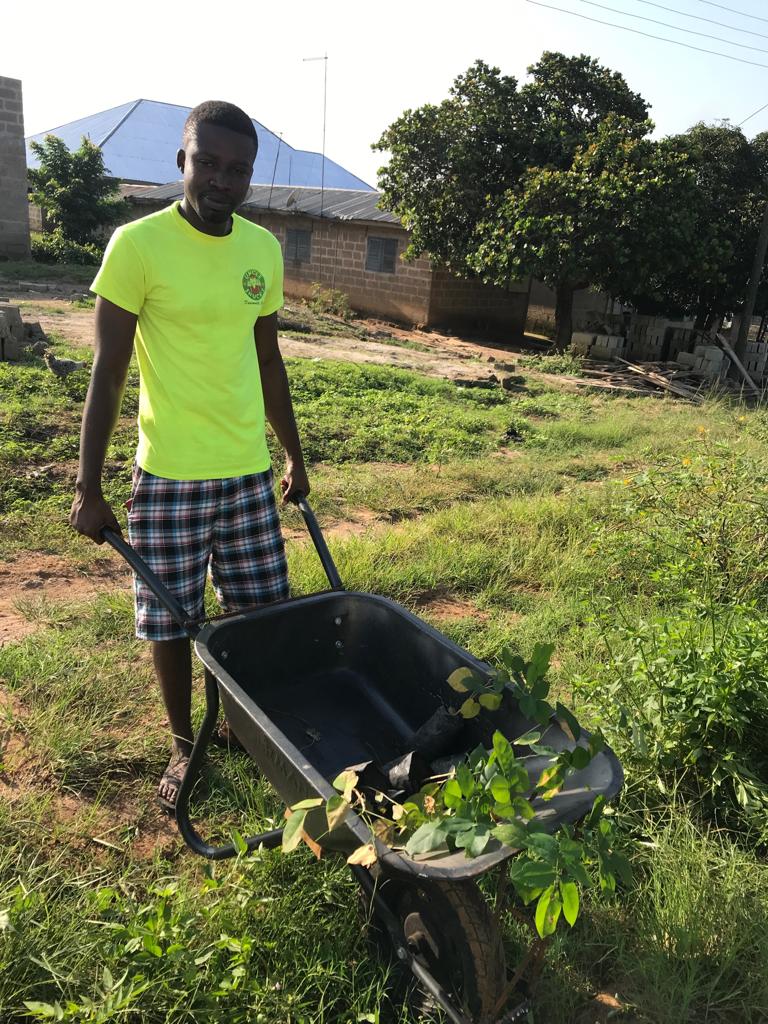The ever increasing awareness and advocacy on the total dependency of humanity on the environment have in recent times erupted a sense of need in most people to restore and preserve nature.
The call to sustain the environment’s ability to still provide ecological services even as we develop has not seen an enviable recognition by most political leaders and power holders despite the continuous out cry of environmentalists. Climate change is real and global warming is fast approaching – Humanity needs to take an action to curb environmental degradation. Construction, farming, deforestation and land use are just a few of the stressors that threaten the sustainable use of the environment.

To be able to fully understand and mitigate these stressors we should consider what drives these stressors and what pressure is put on our natural resources. With this analysis we can rightly determine the state of the environment and then provide result oriented responses to these stressors. Though still not enough, there have been actions from governments, non-profit organization, Civil Society Organizations, Pressure groups and Think tanks to ensure a restoration action is started nonetheless, these actions though perceived as chalking some successes are in reality failing.
Accounting for the failing approach, among many others, is the process of implementation of the mitigation actions. Most of the actions are planned at the global level and are expected to be implemented all the way down at the community level. For example nations have been given emission thresholds at the global level to be implemented whereas the pollution is done at household/industry and individual levels.
Taking cue from the implementation plans of some non-Governmental Organization (NGO) who have recorded significant levels of success in the call to restore nature, the global community should learn to decentralize mitigation measure and stop dealing with governments. These NGO’s are able to decentralize their restoration action to communities and household and this is giving somewhat positive response. The Community Resource Management Area (CREMA) as has been implemented by A Rocha, The Development Institute and some other NGOs in Ghana has seen some considerable success in the call to restore nature.
If restoration action are decentralized to individual levels, where every individual in his/her small way spark an action for change with the youth leading this crusade, then can we expect the change we want. An Individual Based Approach to restoration is what we need to achieve the 1.50C average change in temperature. However, a major challenge to the individual based approach is how to fund such projects as they may not be huge to win international and donor attention.
After a 10 minutes talk to a youth group on the state of the environment and humanity’s dependency on the environment for survival, they were all fired up and ready to kick-start an action to restore nature but the thought of how to fund their projects put them off.
Alas, funding has been the major challenge preventing most young people from engaging in environmental projects. In addressing the issue of funding, some youth employed the 10% environmental tithe approach to fund their individual based environmental projects. With this they dedicate 10% of their salary to fund their projects. The concept of environmental tithe was first highlighted by a social statement of the Evangelical Lutheran Church in America (ELCA, 1993): “We challenge ourselves, particularly the economically secure, to tithe environmentally. Tithers would reduce their burden on the earth’s bounty by producing ten percent less in waste, consuming ten percent less in non-renewable resources, and contributing the savings to earthcare efforts. Environmental tithing also entails giving time to learn about environmental problems and to work with others toward solutions” As religious as we may be, we pay tithes to a God we do not see, what then is wrong if we as well pay tithe to nature which ensures our survival!

Some projects like the Saturdays Sustain Survival project, Eco Warriors, Environmental Synergy are all projects that started based on the 10% environmental tithe financing principle. The principle is individual based and ensures that an individual is committed to monitoring his action through to its success. It should be noted as you carry out self-financed environmental projects, as you show consistency and publicize your works , some other people are also motivated to start a like action. It creates connection with people who are like minded because one person cannot solve all our environmental issues. Together we can save nature. One person may go far but two will always go farther. And that is how the links and connection to international bodies for funding and sponsorship begin. There are testimonies of people who started local with the Environmental Tithe Self-financing model who are now global.
The call to action is now, the time to save Mother Nature is now!! Let us all get to work in sustaining nature for posterity
By Otuo-Akyampong Boakye, Restoration Activist | Otuo2004@gmail.com





